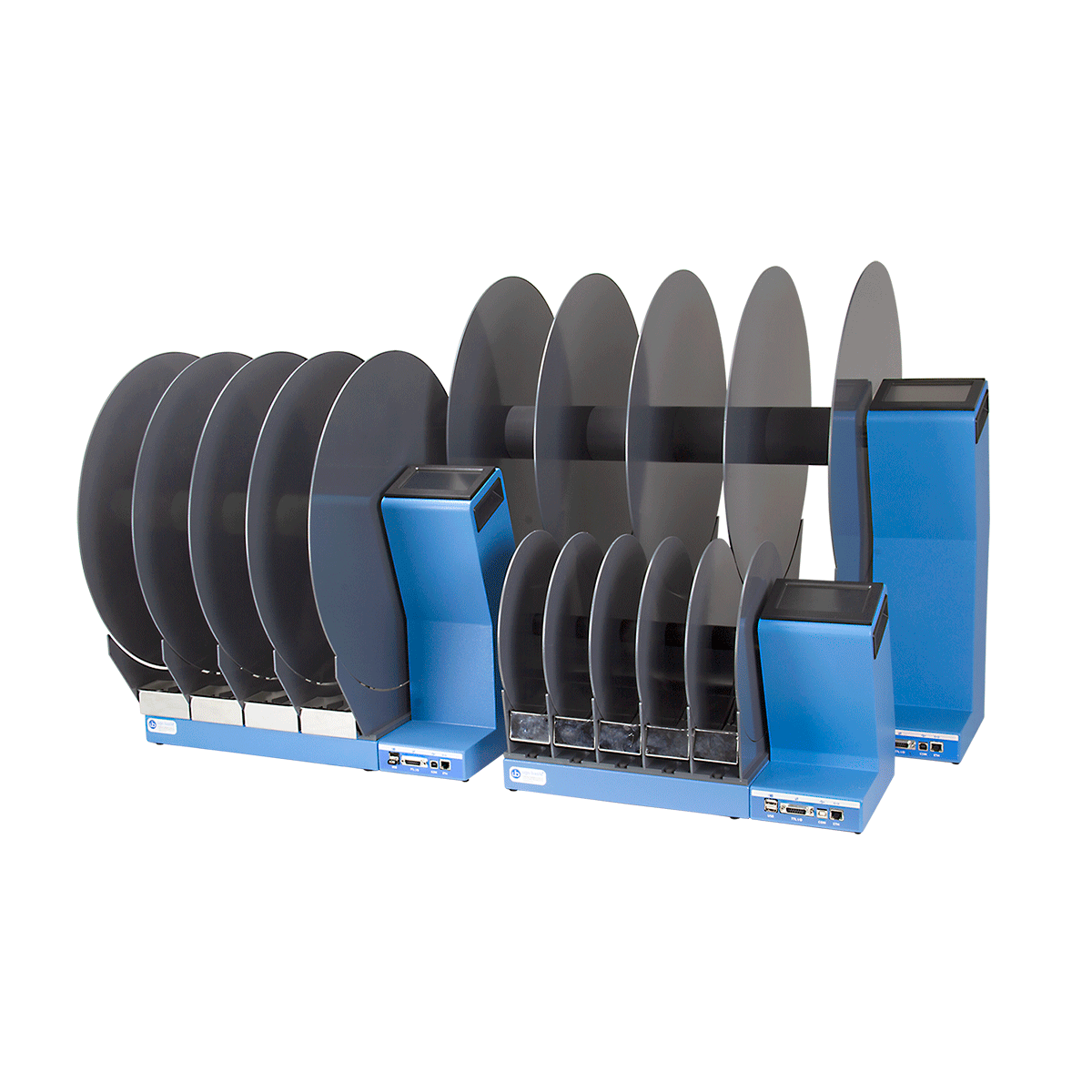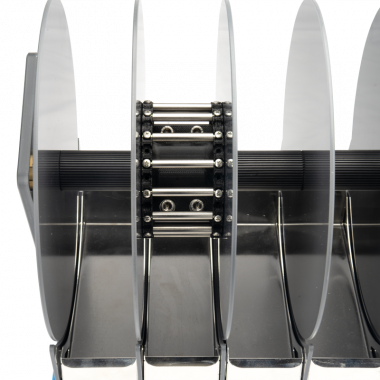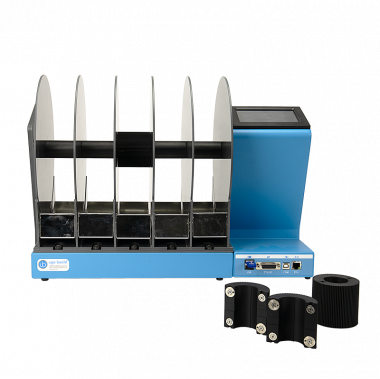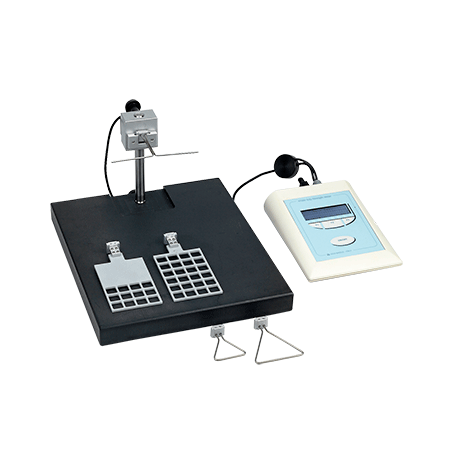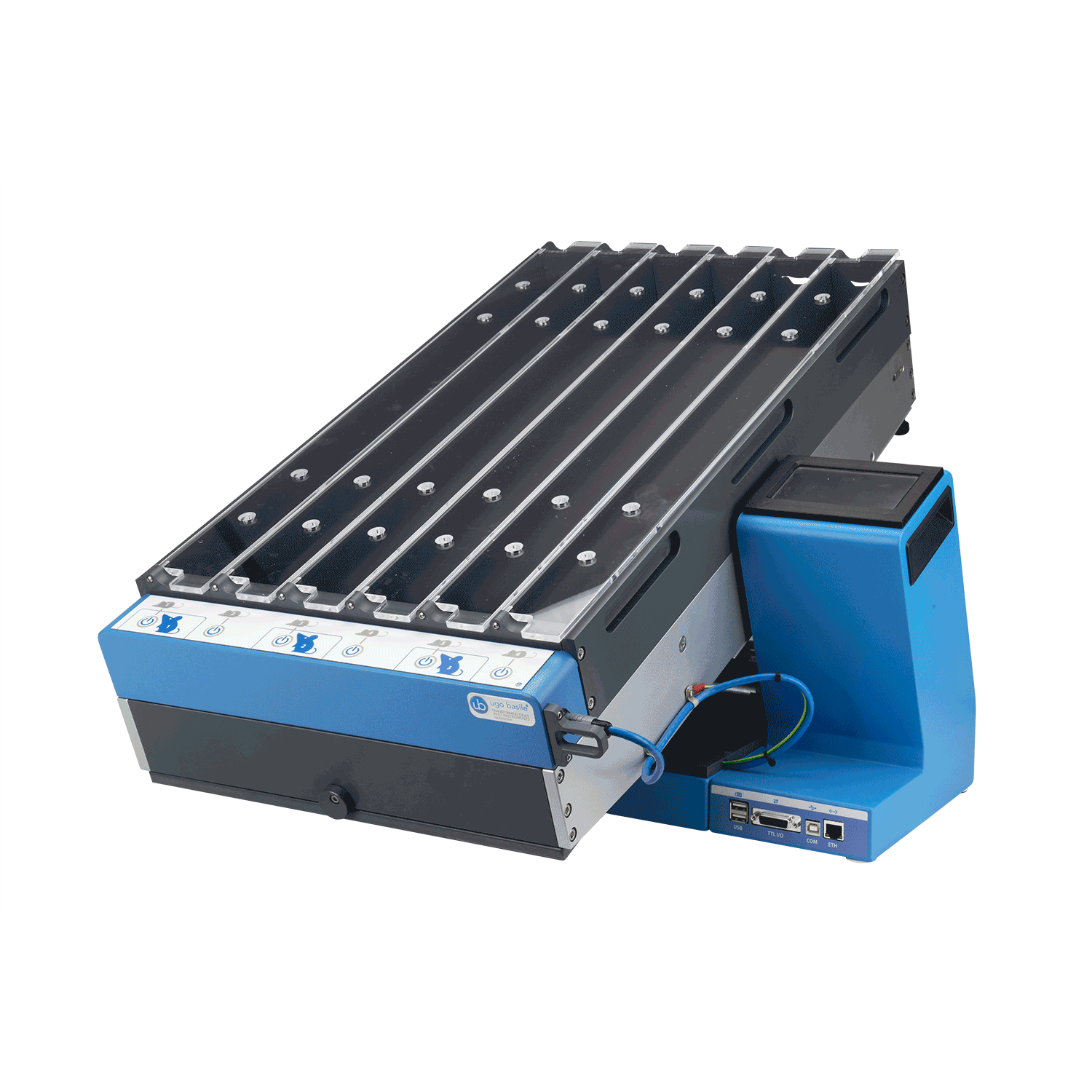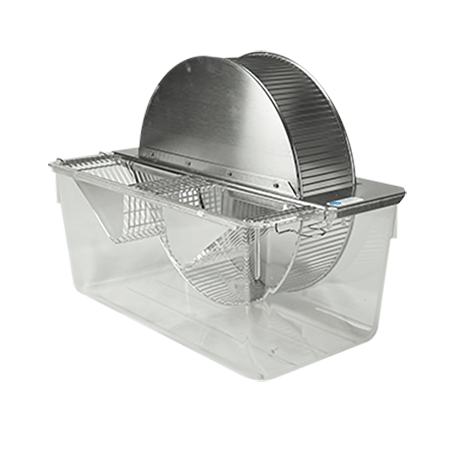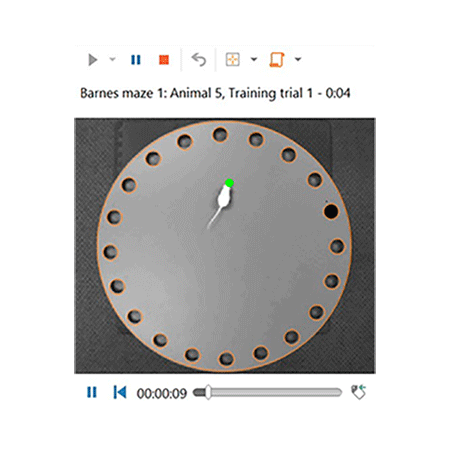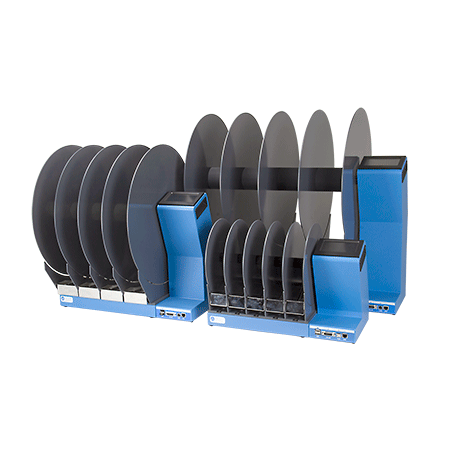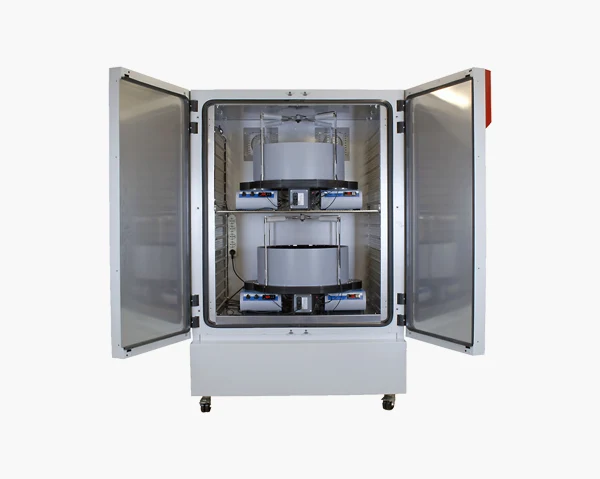Background
The rotarod test, invented by Dunham and Miya (1957) and transformed into a science-grade device by Ugo Basile, is one of the oldest used in assessing the effects of a drug on animal behavior. Today it is obviously used in phenotyping and not only in drug screening.
Drugs (e.g. benzodiazepines) or specific phenotypes alter neuromuscular coordination and hence the time that the mouse or rat remains on the rotating rod.
Multiple animals can be tested at the same time and several protocols exist to train and assess the motory coordination through the falling time.
The output results include for each lane:
- Time elapsed
- Revolutions
- Distance
- Speed
- Rotating mode
System components and main features
Ugo Basile combination Pack includes a Mouse RotaRod and a Rat RotaRod.
The consists of a 3 cm diameter rod, suitably machined to provide the adequate grip to the animals while walking or running. Five flanges divide the five 5.7 cm lanes, enabling five mice to be simultaneously on test. When a mouse falls off its rod section into the trip-box below, its endurance in RPMs is recorded. Height to fall is 16 cm.
The Ugo Basile Rat RotaRod consists of a 6 cm diameter rod, suitably machined to provide grip. Five flanges divide the four 8.7 cm lanes, enabling four rats to be simultaneously on test. When a rat falls off its rod section into the trip-box below, its endurance in RPMs is recorded. Height to fall is 30 cm.
- The Ugo Basile RotaRod comes complete with:
- An electronic unit with touch screen to set all parameters and save data
- USB port to save data and export them in CSV files
- A PC software to build custom rotation ramps and populate your animal vivarium
- Additional features include:
- TTL input/outputs for trip box status and start/stop of the test
- COM port for maintenance purposes
- Ethernet port for support and maintenance (to be used at the factory only)

